Why Plant a Medicinal Herb Garden?
Written and Photographed by Mary Plantwalker
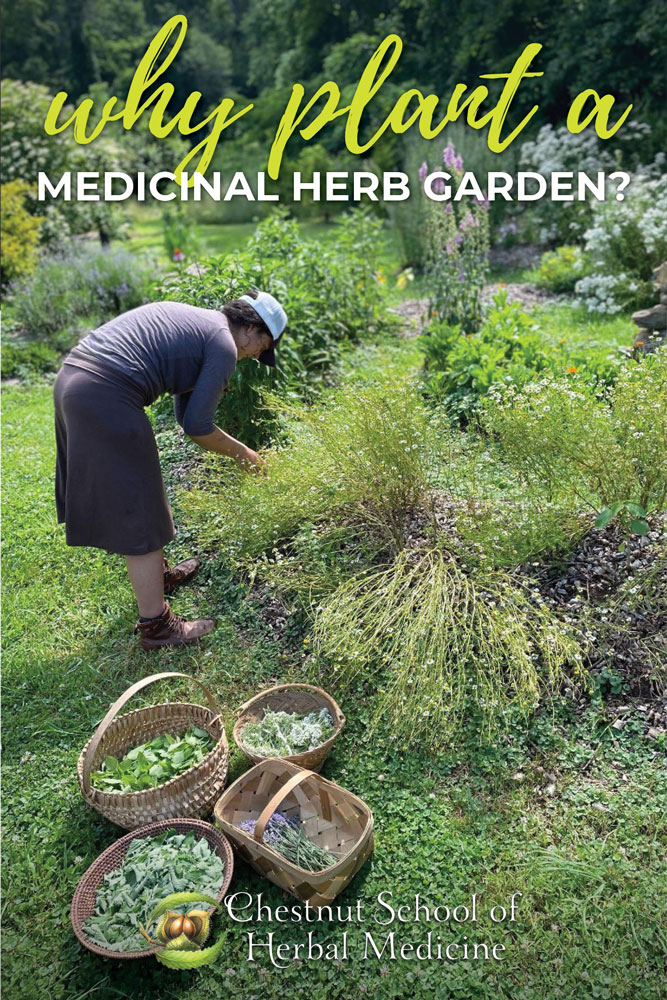
–
In the last few years, there has been a steady increase in people gardening for the sheer therapy of it. Gardening can be a psychological lifeline1 in times of crisis, and I imagine anyone reading this would agree we are living through some crazy times that evoke continual crises of all kinds. More and more folks are beginning to catch on that when you plant a garden, you get more than just food for the body. You are also planting and harvesting food for your soul. Can you imagine then, the breadth of sovereignty and satisfaction that can be accessed by additionally growing your own medicine?
Let’s explore why planting a medicinal herb garden is good for both humanity and the planet’s well-being, get inspired by established medicinal herb gardens from around the world, and embrace a few tips to help get our medicine gardens going.
–
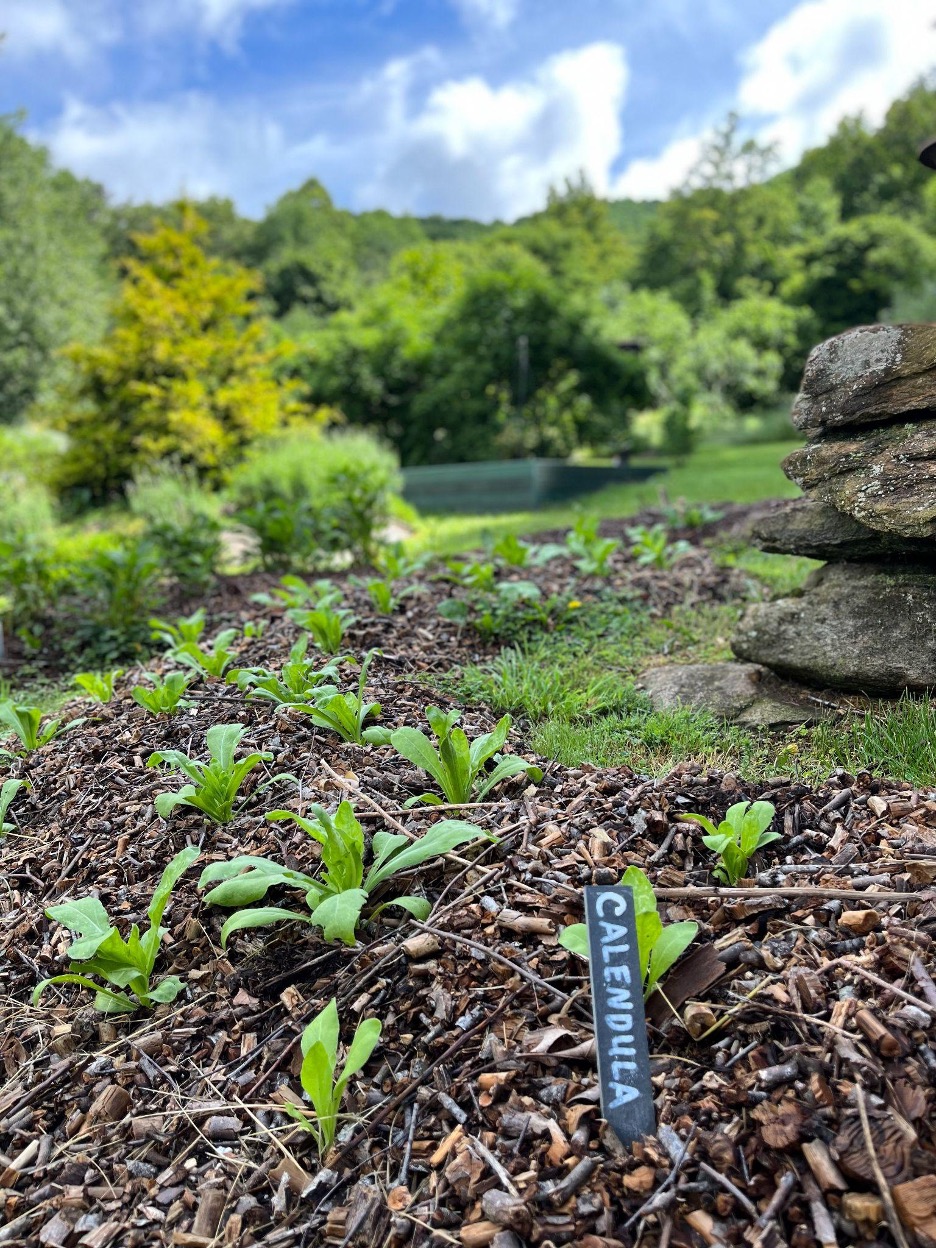
Medicinal Herb Gardening empowers us to take healing into our own hands.
–
Why Plant a Medicinal Herb Garden?
Many of us are seeking more tangible security in our lives as seed suppliers are selling out of seeds, gardening tool sales are out the roof, and nurseries can’t keep up with their stock. Could there be a more powerful way to take matters into your own hands than by growing your own food and medicine?
Planting for the Future
What’s healing for the earth is healing for humans, and vice versa. When we take the time to have a garden, we are participating in a feasible, revolutionary act of reciprocity by investing in green resiliency. When we consider the fact that every green thing planted absorbs carbon from the air and filters it, gardening really does become a doable solution to this climate crisis. By planting a medicinal herb garden in particular, we offer ourselves up as world citizens in service to the healing of both ourselves and our planet.
Have you ever noticed how many pollinators abound on the flowers of healthy, non-sprayed plants? When herbs like meadowsweet (Filipendula ulmaria) come into bloom in our Family Medicine Spiral, or mullein (Vebascum thapsus) is popping out its little yellow blossoms, I am entranced by the activity of bees, flies, ants, butterflies, beetles, and more pollinating these flowers. Yes, our food chain is dependent on the health of these pollinators, but it isn’t just about human needs. Our planet is home to a large web of life, and our future depends on our personal actions inside this web. So many beings benefit from our choice to grow an herb garden—from human to earthworm. We are all connected, and by learning the art of cultivating and preparing our own backyard medicine, we set a positive example of how to make this world a better place.
Lessen Your Footprint
How easy it is in the modern day to consume products from who-knows-where. And how disconnected we have become from knowing how that consumption affects the environment. It can truly be overwhelming as a conscious person to try and lessen our footprint on the planet. But every little step matters, and if you are able to provide basic healthcare for yourself and family and/or community by planting a medicinal herb garden and making home remedies, then you are contributing to the reform of healthcare. The United States alone spends over 4 trillion dollars a year2 in healthcare. Many of the healing plants that you can easily grow will help keep you and your loved ones out of unnecessary trips to the doctor’s office.
–

BeeBalm (Monarda didyma) is an easy herb to grow yourself and make into a cup of tea to help relieve symptoms of the common cold.
–
You will also know exactly where your medicine comes from instead of having it shipped from across the world, or grown in a field that has been contaminated by chemicals, or tended to and harvested by laborers who are not provided with adequate wages or working conditions. As a consumer, you have a vote with the medicine you put in your body. It is also quite possible, as I have found over the years, that you won’t need as much internal medicine when you grow your own herbs, as tending to the plants is medicinal in and of itself. So, you need less. You consume less. Imagine the impact collectively consuming less could have on our planet. It’s huge!
And lastly, you can be mindful that the type of medicine you grow extends both before and beyond your garden by actively sourcing your seeds and plants ethically!
Creating Beauty
Let’s not forget beauty—beauty goes such a long way toward creating health in our lives. Being surrounded by beauty is so potent. Why do we underestimate its powers?
Walking through your medicinal herb garden and admiring the sunshine blooms of calendula (Calendula officinalis) nodding in the breeze, the blue sky watching over your bed of tulsi (Ocimum sanctum), the dew drops collected upon your lady’s mantle (Alchemilla vulgaris), the monarch butterfly alight on your pleurisy root (Asclepias tuberosa), or the song sparrow nesting in your hawthorn (Crataegus spp.)—well….none of this healing beauty can be obtained from ordering herbal pills on Amazon!
You will usually have an abundance of one herb or more and can make medicine from your garden to share with others if you choose. Some of the most healing gifts I have received are salves, teas, tinctures, elixirs, and herbal vinegars from friends’ little herb garden plots. This kind of healing creates immeasurable beauty and wealth in our lives and community.
–
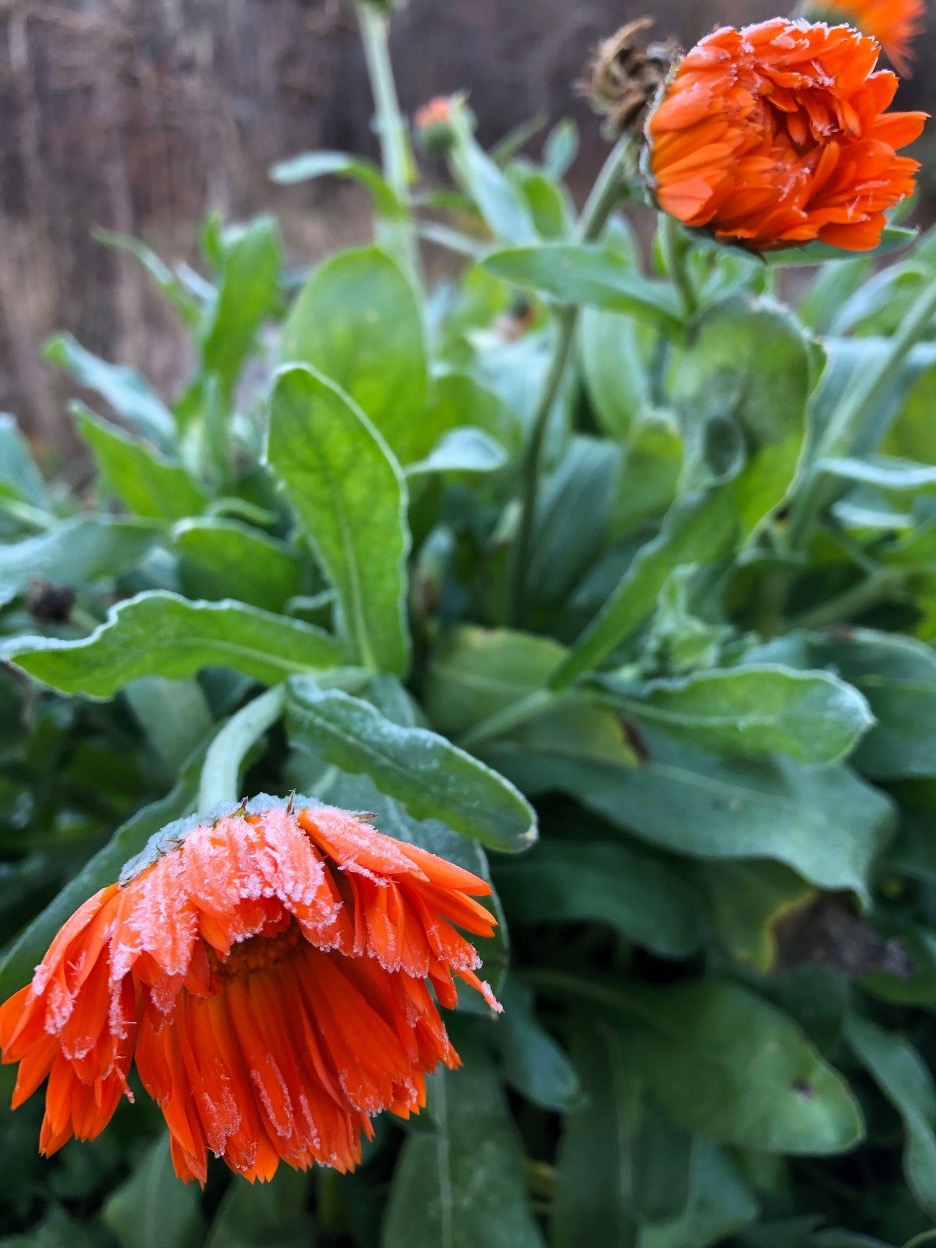
You will get to know your medicine in all kinds of weather, creating a strong relationship with your allies.
–
Medicinal Herb Garden Inspiration
Medicinal herb gardens come in all shapes and sizes. Oh, how varied they can be! Grow just one simple bed or design a complex garden; make a potted herb garden or aim for medicinal plants to fill up your backyard; carefully plan out all the design details or let it organically unfold: make rows or spirals—what do you think is best for you? Don’t let yourself be paralyzed by dreams that seem unattainable; start where you are and the seeds of your garden will sprout futures of their own.
–
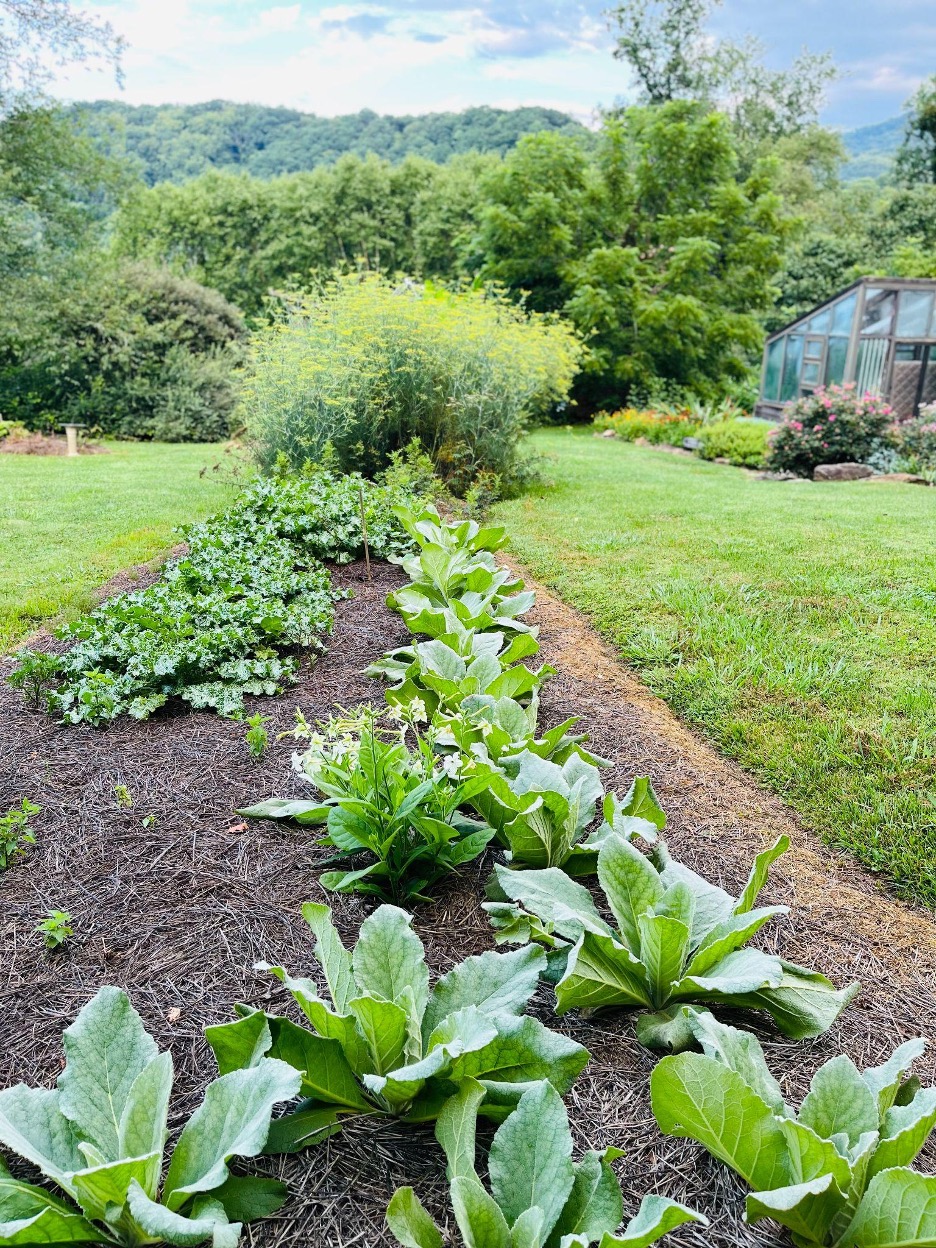
Mullein (Verbascum thapsus), milk thistle (Silybum marianum), and fennel (Foeniculum vulgare) all in a row.
–
There is a fabulously informative medicinal herb gardening hub on the Chestnut School’s Blog with many articles that can help you grow healing plants, like tips for planning the herb garden of your dreams and how to start an herb garden. Your ultimate medicine garden will be one that resonates with both your values and available energy.
Examples of Medicinal Herb Gardens from Around the World
Actually walking among medicinal plant gardens, designed to bring awareness to their healing powers, made the greatest impact upon my future as an herb gardener. I have had the opportunity to visit some remarkable educational medicinal herb gardens over the years, and each time I step foot in one, I am immediately soothed. Here is a sneak peek into some places that stand out to me through their unique design and botanical contents. I hope these gardens can lend inspiration and excitement to the creation and maintenance of yours, and perhaps you will visit them, too?
Chelsea Physic Garden
This was the first medicinal herb garden that I went to that brought me to my knees. I actually kneeled and wept in this place. Built in the late 1600’s, hidden behind walls, tucked inside the booming city life of London within a short walk of the River Thames, its gardens were named after their caretakers over the centuries. Being at Chelsea felt holy, like being inside a monastery of plant people. Over 5,000 plant beings who are edible, medicinal, or a combo thereof, live in this sanctuary. There are also “officinalis beds” that show what plants were popularly sold as medicines way back when, and ‘world medicine beds’ that highlight plants used by traditional healers around the world, among many others.
Sage Mountain Botanical Sanctuary
Over twenty years ago, I had the good fortune to visit Rosemary Gladstar at her former home, Sage Mountain Botanical Sanctuary. I was given a simple, beautiful brochure that guided my friend and me through her healing gardens. Hundreds of medicinal plant species, growing both in sun and shade, labeled and alongside the clearly marked paths so they were easy to meet and greet, stirred a longing in me to create a healing garden of my own one day. I met many a medicinal plant friend for the first time in her garden, like coltsfoot (Tussilago farfara), horehound (Marrubium vulgare), and comfrey (Symphytum officinale).
The Green Farmacy Garden
Created by the late Jim and Peggy Duke in Maryland, this garden stands out to me in such a fun way! The Dukes named each garden after a diagnosis, then filled them up with plants that help heal those ills! Somehow, that way of designing a medicinal herb garden brought lightness to the experience of illness for me. The garden has four terraces, and each one within it has medical terms, like “Baldness” or “Asthma” or “High Blood Pressure” with planted examples of herbs that remedy the problem. If you live in the area, the Green Farmacy Garden accepts volunteers—a great way to meet the medicine!
Kirstenbosch Gardens
Located in Cape Town, South Africa, Kirstenbosch Botanic Garden’s mission is conservation-oriented. Beautiful gardens educate the public about Indigenous uses of many plants, including what medicines are widely used throughout the region. When I visited in 2006, there was a little hut called the Zulu Pharmacy that had displays of how plants are incorporated culturally into Zulu healthcare, with many of the plants themselves growing around the hut. Kirstenbosch is hot on fighting for the critically endangered Brackenridgea zanguebarica, aka the mutavhatsindi or yellow peeling plane tree, which almost went extinct due to overharvesting, as it is the most sought after medicine of the Limpopo. The efforts of places like Kirstenbosch to educate the public and preserve cultural medicine may be the difference between extinction or a future for these potent green healers.
–
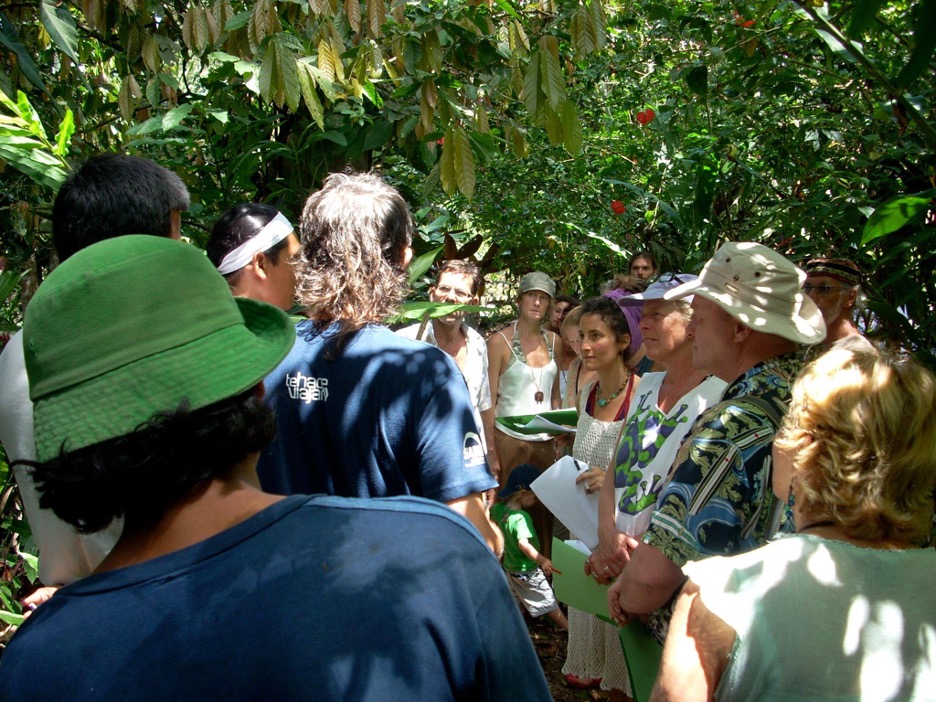
Mary Plantwalker leading a medicinal plant walk in the gardens of Miraflores in 2007
–
Miraflores Labyrinth Garden
Costa Rica is home to a garden close to my heart, as I had the opportunity to tend the healing herbs in the labyrinth beds of the Miraflores Lodge Garden. What a potent way to grow the healing plants! Inside the labyrinth one can feel their presence leading you into the center, and then back out again. Walking the Labyrinth garden, you can make a meditation out of nibbling on the traditional healing plants of the Bribri tribe, like Cnidoscolus chayamansa, or smelling the pungent Eryngium foetidum or touching the dainty leaves of Dianthera pectoralis. But be mindful not to rub against ortiga (Urtica dioica), the great stinging nettle!
Berkeley Botanical Chinese Medicinal Herb Garden
An inspiring demonstration garden to help students go beyond dried herbs, the Berkeley Botanical Chinese Medicinal Herb Garden answers the curious student’s questions—How do the herbs grow? What do they look and smell like? Is it a tree or a bush or a root or what? Arranged in traditional function groups, like clearing heat, eliminating wind, astringent, etc…plants are labeled with scientific names, Chinese medicinal names, and the plant part used. Our local Chinese Medicine College in Asheville, Daoist Traditions, has a small version of their own. If you are a student of traditional Chinese Medicine, look for a garden near you to visit as you will be transformed from meeting the plants themselves!
–
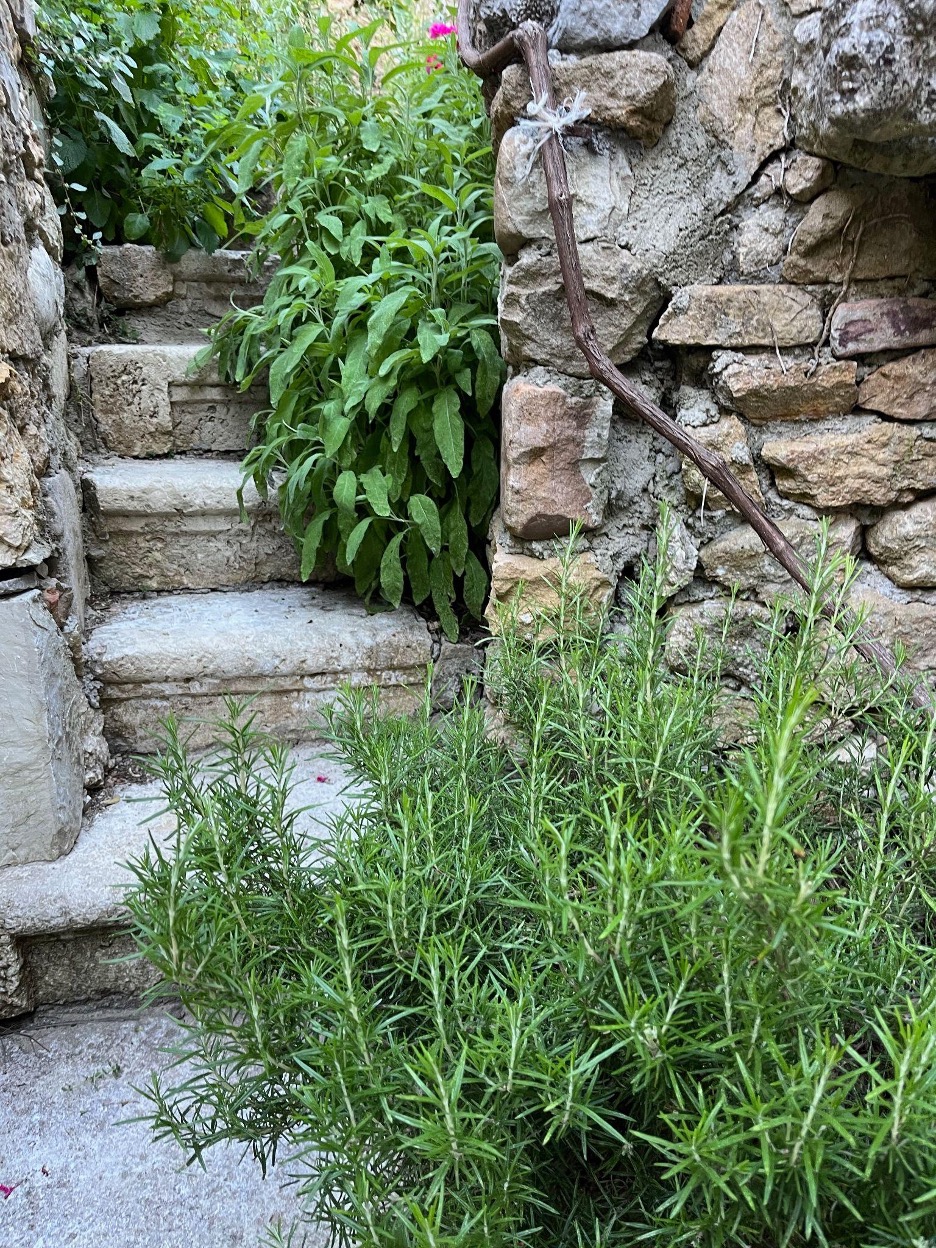
Entrance to the Teaching Garden in Sicily.
–
Teaching Garden in Sicily
Walking along the cobblestones of Petralia Sottana, I turned into a secret garden that has been growing clary sage (Salvia scalarea), rue (Ruta graveolens), mallow (Malva spp.), garden sage (Salvia officinalis), rose (Rosa spp.), fig (Ficus carica), grape (Vitis sp.), rosemary (Rosmarinus officinalis), lavender (Lavandula latifolia), mint (Mentha spp.), and more from the same seeds or root stock, for centuries! People have come here since the 1700’s to touch, smell, taste and make medicine from herbs that are the beloved healers of Sicily. The plants are taking care of themselves, and I met the largest cheese mallow (Malva sylvestris) I have ever seen—basically a small tree! It is an old teaching garden, and carries an essence of the past that is tangible. Even though I could not speak Italian and the man who stewards this place could not speak English, we spoke Latin plant names which helped bridge the gap of any mystery plant.
–
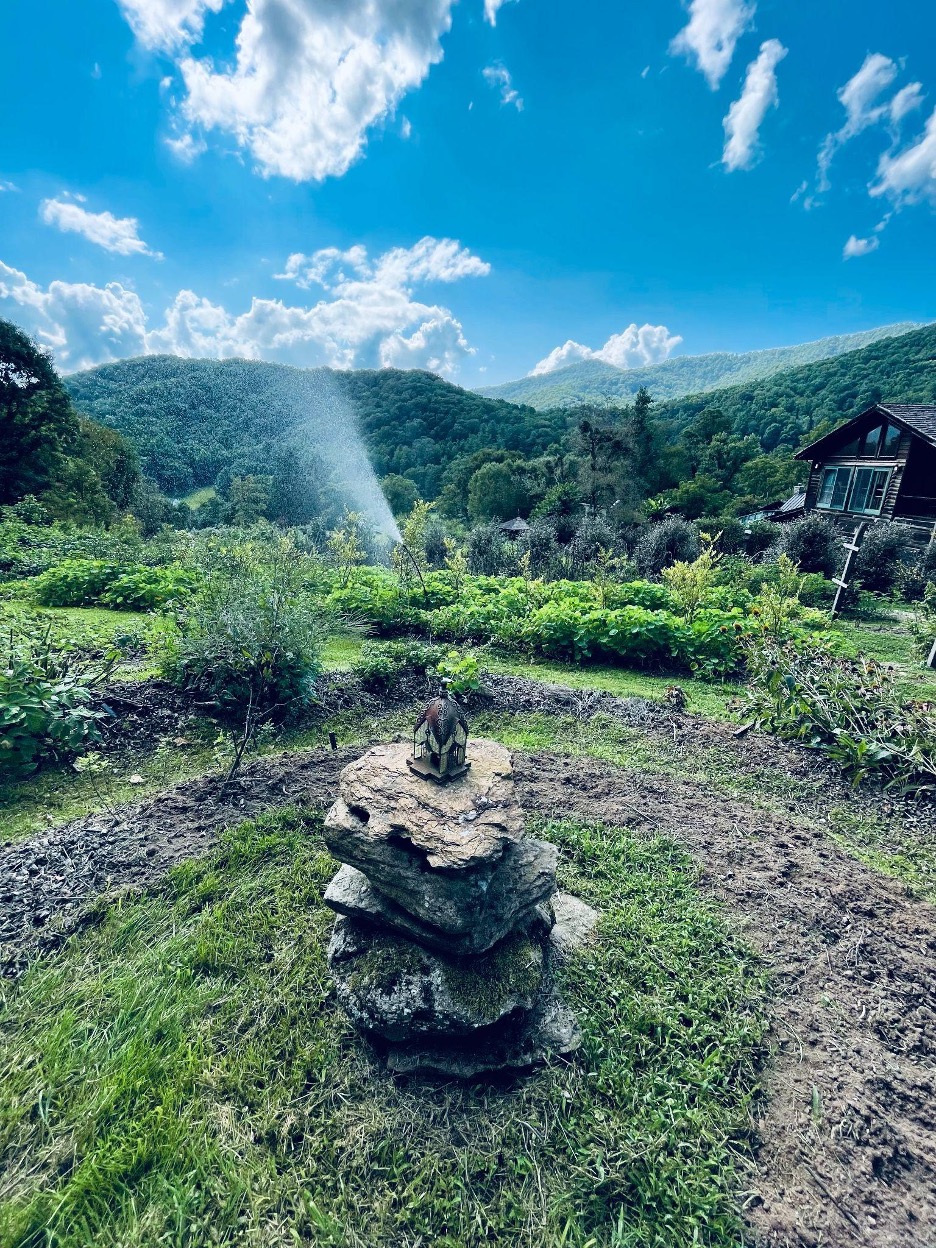
The Family Medicine Spiral at Herb Mountain in late fall, freshly weeded and compost added.
–
Herb Mountain Farm
My home sanctuary, Herb Mountain Farm, has quite a number of gardens, many of which have medicinal plants growing among them. But our Family Medicine Spiral is where we grow healing herbs specifically for filling our home apothecary. Knowing what strengths and weaknesses my family has, and how we tend to be with illness, over the years I have cultivated the plants our family needs on a regular basis. For example, my husband is a pipe smoker and if he is going to get sick, it usually goes into his lungs. So we grow a lot of elecampane (Inula helenium) and mullein. I have skin that is easily irritated and so calendula and marshmallow (Althea officinalis) are my allies standing tall and happy in the spiral. Fragrant peppermint (Mentha piperita) is one of the few medicinal teas I can get our little girl to drink when she has a cold. Spiraling into the center, where I have the ashes of my former partner placed atop a cairn, is a medicinal prayer for healing too.
Take Away Tips
Maybe the idea of creating your own medicinal herb garden is new to you or perhaps you were growing healing herbs and somehow the weeds and insects engulfed them back into earth’s fold. Either way, tending our healing gardens is an ongoing process that can be begun and/or revised at any point, and here are a few points of review to take away if you are ready to grow.
- Be the Change. Each of us has more power than we know—be the revolution by growing your own medicine!
- Refer to Chestnut School Blogs. Everything you could want to know about planting medicinal herb gardens is here!
- Take a class. Find an in-person or online class to further develop your confidence and skills in herb gardening.
- Grow one plant. If nothing else, grow at least one medicinal plant. Start there. It can be in a container or indoors if need be.
- Visit already established medicinal herb gardens in your community or afar. You may meet some plant-loving people in your community you didn’t even know existed!
- Get The Healing Garden. Ok, I am not kidding when I say that if I had access to a book as thorough and inspiring as Juliet’s first book The Healing Garden, I could have saved myself a lot of mistakes and received guidance when I was lost with nowhere to turn. Like the late herbalist Steven Foster said, “The Healing Garden is a once-in-a-generation herbal for the 21st century.”
–
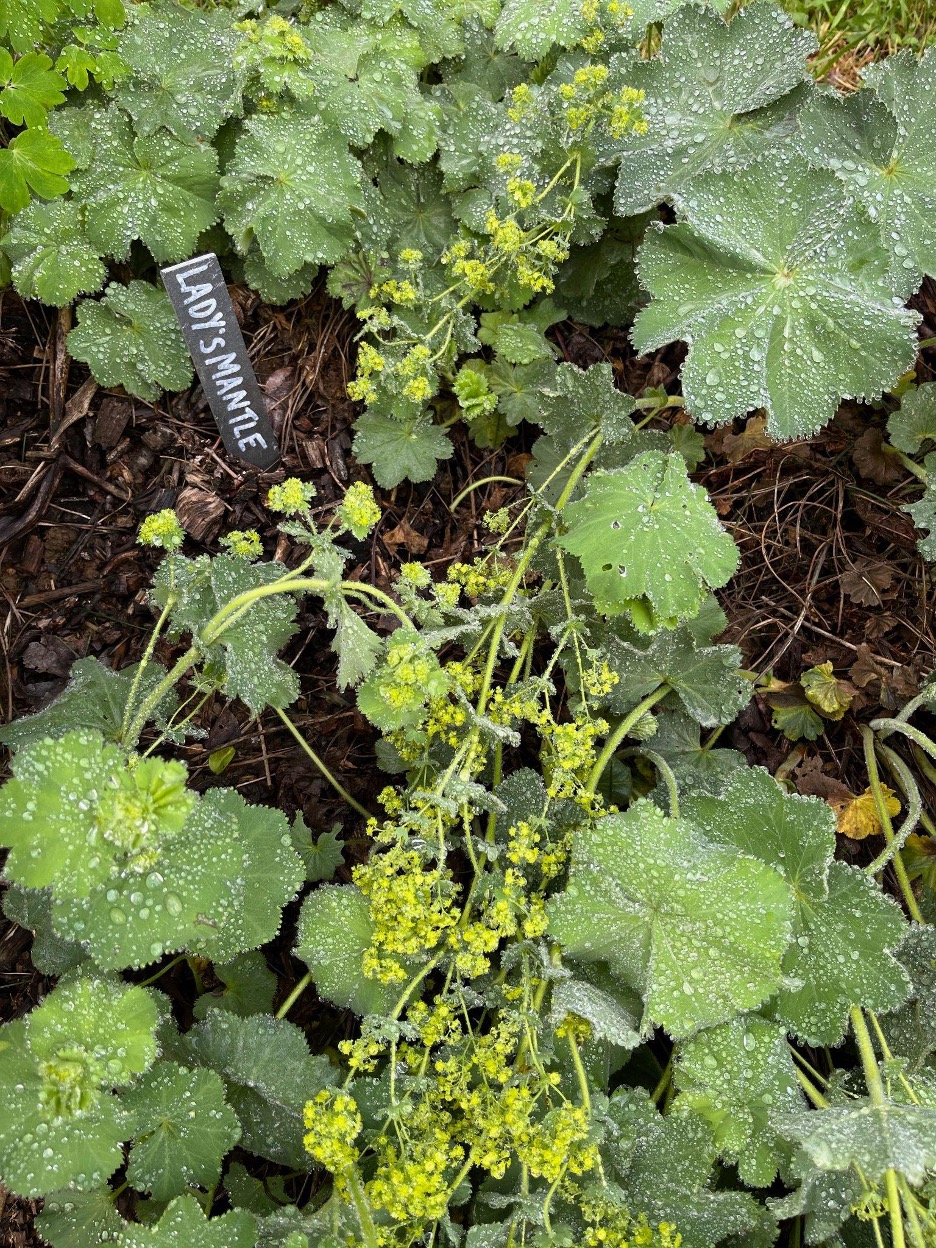
Even if you just grow one medicinal plant, grow it with all your heart.
References
- Roach M. Why Gardening Offers a ‘Psychological Lifeline’ in Times of Crisis. https://www.nytimes.com/2022/03/16/realestate/gardening-pyschology.html
- Health System Tracker. How has U.S. Spending on Healthcare Changed Over Time? 2022. https://www.healthsystemtracker.org/chart-collection/u-s-spending-healthcare-changed-time/
Looking for more blog articles about medicinal herb cultivation?
Remember, we’ve got a wheelbarrow-full of herb gardening and seed starting resources on the blog. Come on over to browse, pick up our personal gardening tips, and learn about our can’t-live-without garden medicinals.

MARY MORGAINE SQUIRE (aka Mary Plantwalker) is a devoted mistress of Earth Mother and an outspoken Voice for the plant world. Through Story, Ceremony, Creating Sanctuary and her petite nursery called Mary’s Flora, Mary weaves together accessible ways to deepen your own connection to our generous plant allies. She and her partner, Hart, passionately steward a botanical sanctuary in the mountains of North Carolina called Herb Mountain Farm. Follow her escapades delving into our relationship with nature on Instagram or visit her website for more offerings.
Interested in becoming a contributor?
© Chestnut School of Herbal Medicine and chestnutherbs.com, 2011-2023. Unauthorized use and/or duplication of this material without express and written permission from this site’s author and/or owner is strictly prohibited. Excerpts and links may be used, provided that full and clear credit is given to Chestnut School of Herbal Medicine and chestnutherbs.com with appropriate and specific direction to the original content.
Want to take a deeper dive into medicinal herbs and their uses?
Our 1,000-hour Herbal Immersion Program is the most comprehensive handcrafted online herbal course available, covering botany, foraging, herb cultivation, medicine making, and therapeutics.
The post Why Plant a Medicinal Herb Garden? appeared first on Chestnut School of Herbal Medicine.

Leave a Reply